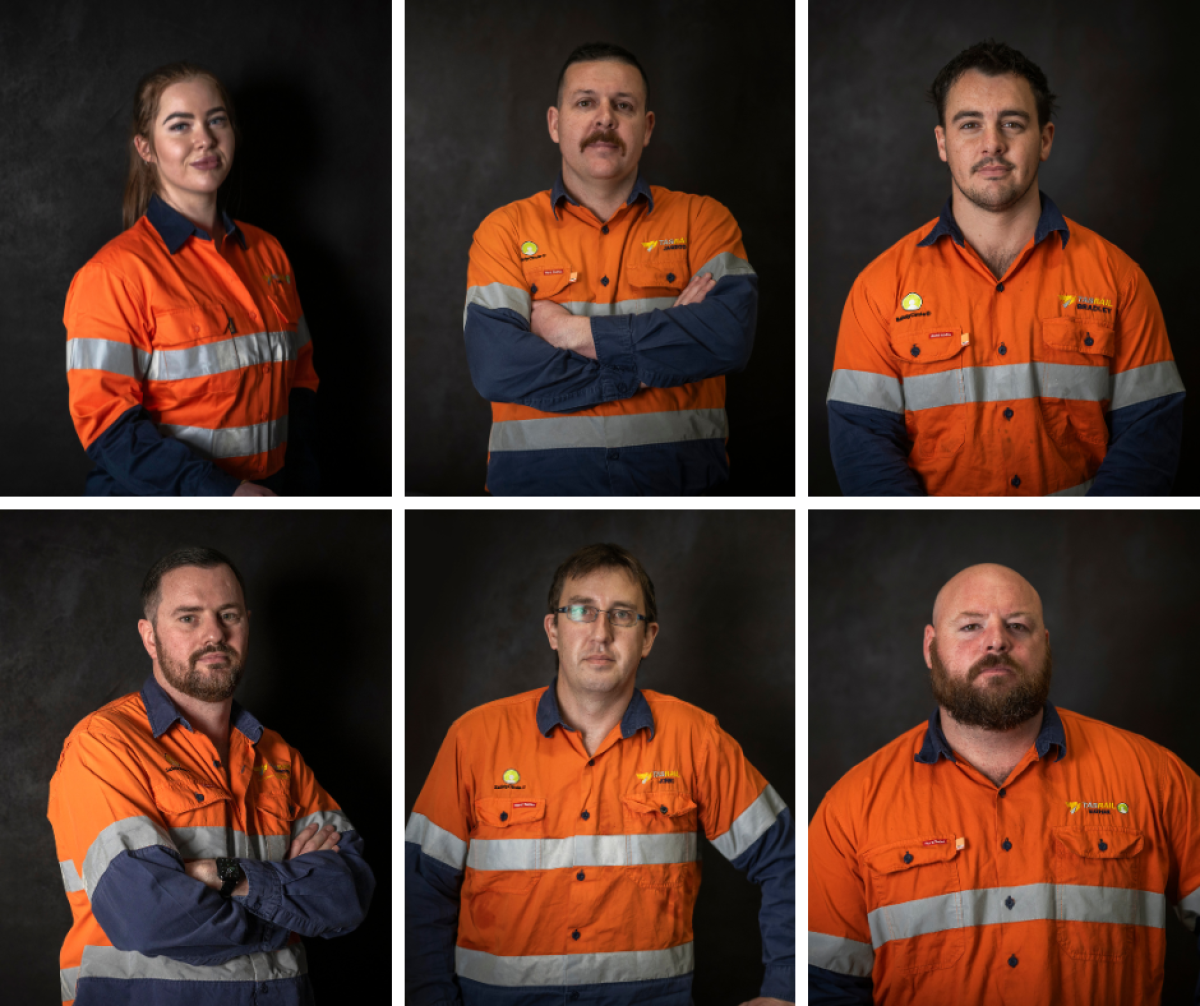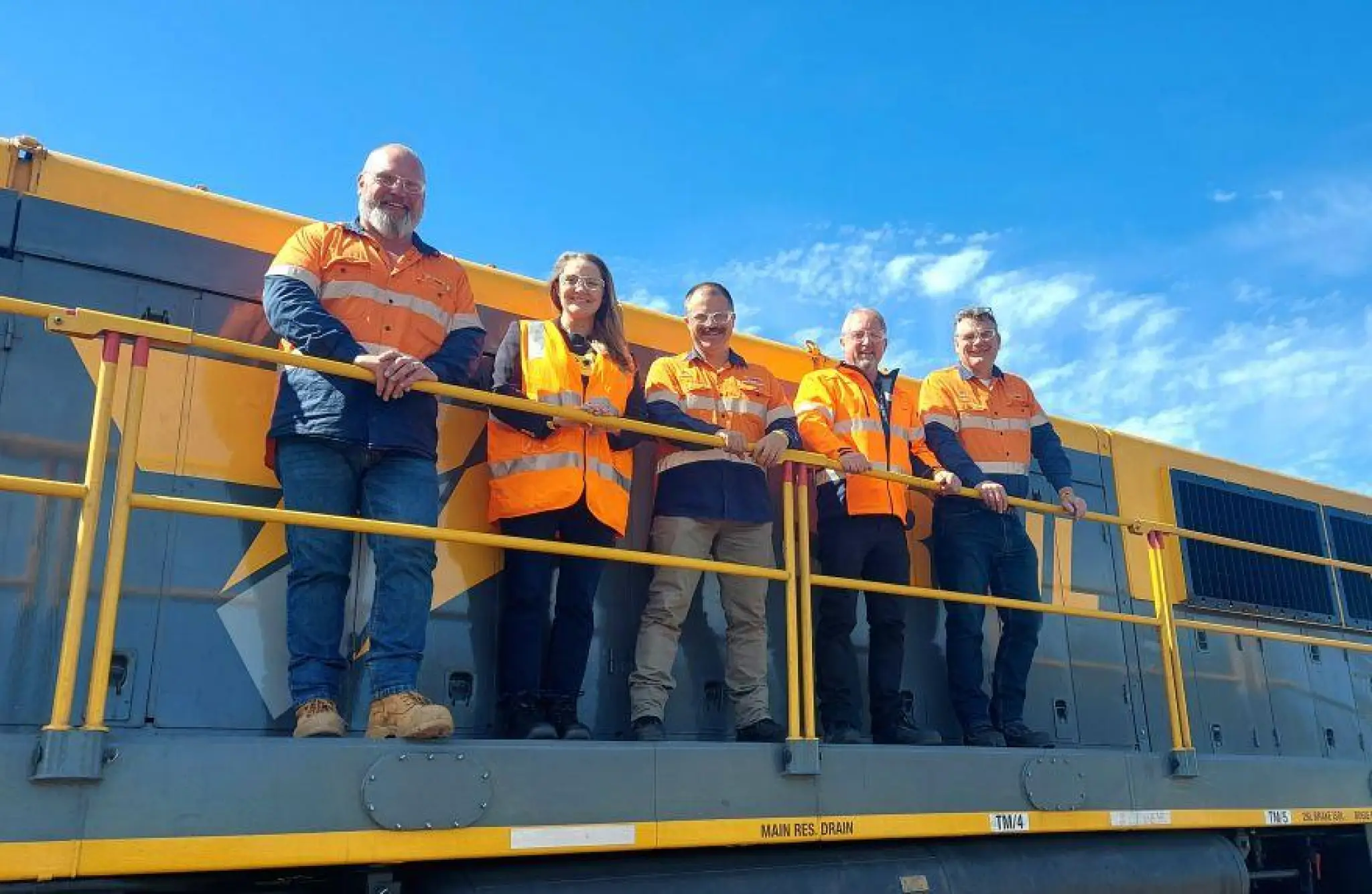Rail Safety
Rail Safety Week
At TasRail, safety is at the heart of everything we do.
As the backbone of freight transport in Tasmania, our network intersects with roads and footpaths at around 180 public level crossings - each presenting unique risks to the community and rail operations.
While incidents at level crossings are rare, their consequences can be severe. Collisions or near misses can lead to service disruptions, significant delays, property damage, and in the worst cases, serious injury or loss of life. Even a low-speed train collision can have devastating impacts - especially for vulnerable road users like pedestrians and cyclists. Between July 2018 and June 2024, TasRail recorded eight collisions and 311 failures to stop or give way at level crossings. These incidents have a lasting toll on train drivers, railway staff, emergency services, and the broader community.

How We’re Making Crossings Safer
TasRail has made significant safety improvements over the past decade—and we’re not stopping. We continue to invest in initiatives that reduce risk and enhance public safety:
Upgrading crossings - Replacing outdated infrastructure and transitioning passive crossings to active ones with flashing lights and bells.
Improving visibility - Enhancing sightlines and road markings to give drivers better warning and more time to react.
Smarter technology - Introducing remote monitoring, real-time diagnostics, and low-cost solutions to improve crossing safety and reliability.
Reducing risk - Working with road managers to identify and, when required, rectify LX asset condition to keep our people and the community safe.
Speed and signage - Investigating speed limit reductions on high-speed roads approaching crossings and ensuring clear, consistent signage and pedestrian controls are in place.
Raising awareness - Educating the public and promoting safer behaviour around level crossings.
The risks at each crossing vary, depending on train speed, road traffic, visibility and crossing type. That’s why a tailored approach to safety is vital. We are working with all stakeholders to build a safer, more reliable, and more integrated rail network for Tasmania’s future.
We are working with all stakeholders to build a safer, more reliable, and more integrated rail network for Tasmania’s future.
What’s it going to take?
TasRail’s What’s it going to take? campaign was born out of business-wide frustration, with an alarming rise in level-crossing incidents, which nearly doubled from 39 in 2022-23 to 68 in 2023-24. The unfortunate catalyst for action was a very serious collision with a heavy vehicle that occurred in April 2024 in Northern Tasmania. This incident is bravely recounted in one of the campaign videos. This oversight of basic road rules trend continues to pose an unacceptable risk to public safety, train crews, and the wider community.
The What’s It Going to Take? campaign aims to address this issue by highlighting the devastating consequences of reckless decisions at level crossings, not only for individuals involved but also for train drivers and their families. TasRail is a regional railway that runs through many small communities throughout the State it is integral that we foster a cultural shift towards a greater sense of responsibility when using level crossings. One wrong decision by a road user could affect so many lives and there is a good chance that this could include someone they know.

Did you know?
Trains always have right of way. Just like trucks, they cannot stop quickly, especially with a load. Unlike motor vehicles, trains cannot swerve to avoid a collision. They must rely on road users to obey the road rules at level crossings.
- It can take a fully loaded freight train more than 1000 metres to stop after the emergency brakes have been applied. To put that into perspective, that’s:
- Approximately 10 end-to-end laps of UTAS stadium in Launceston.
- Close to a return trip on the Gorge Chairlift in Launceston
- About the distance between Macquarie Point and the Salamanca Market in Hobart
- About three laps of the riverfront at Bells Parade at Latrobe.
- Every year, there are more than 1,500 near misses or collisions at Australian level crossings.
- Australia has more than 23,000 level crossings. Each of these crossings have a warning sign and many crossings also have flashing lights, alarm bells and boom gates for added protection and safety.
- There are ~180 public level crossings across Tasmania’s 600km of operational rail network, and most are located in rural or regional areas.
- TasRail operates more than 100 rail services a week throughout the day and night. These services are coordinated to meet shipping schedules and the needs of our customers, so driver vigilance is always essential.

See tracks, think trains!

Proud supporter of the TrackSAFE Foundation
At TasRail we recognise that rail safety must extend beyond just our organisation to educational and community service groups, local and federal government, road users and the broader community.
That’s why TasRail is one of the founding members of TrackSAFE, a harm-prevention charity dedicated to improving the workplace for rail employees.
Established in 2012 by the Australian rail industry, TrackSAFE offers trauma-related support to rail workers and specialises in rail suicide prevention, as well as level crossing and track safety.
